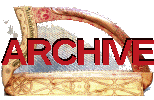
|
Though the Early Music movement has long been reconstructing and recreating lost strands of mainstream European art music, there has not been a similar movement to reconstruct lost oral traditions. The main reason is obvious: the art music revived by the Early Music movement was written down, and so a modern musician-scholar can take a facsimile of the source notation, and perform it using a historical or reproduction instrument.
By definition, an ancient oral tradition has no written primary sources, and so is often dismissed as intrinsically lost or unknowable. However, there are more subtle ways to retrieve elements of a lost tradition than this.
I often think of a parallel with history and archaeology. People used to think that the narrative of society in Britain before the Romans came and started writing history, would be forever unknown. However, scientific archaeology reveals more and more detailed pictures of chronology, economy and social organisation from centuries or millennia before any accounts were written down, based solely on technical analysis of detritus and rubbish buried in the ground.
The lost ancient oral traditions of music can be approached in a similarly bottom-up and fragmented way.
I have published a Tutor book to explain the practical aspects of what we have discovered so far.
Old articles:
Comparing oral and written aspects of the tradition.
The modern revival.
Simon Chadwick